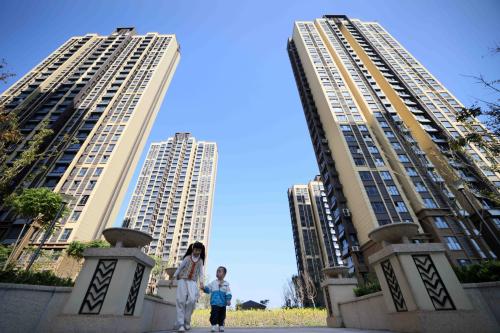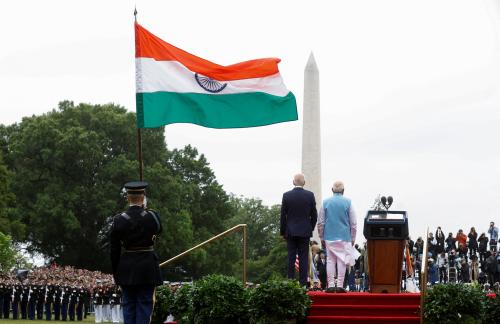Content from the Brookings Institution India Center is now archived. After seven years of an impactful partnership, as of September 11, 2020, Brookings India is now the Centre for Social and Economic Progress, an independent public policy institution based in India.
*This column first appeared in Mint, on May 25, 2014. All views are personal. Brookings India does not hold an institutional view on any subject.
Narendra Modi’s ambitious development plan, anchored in investment, infrastructure and job creation, requires two fundamental external conditions. First, ensuring a no-war environment, particularly in India’s immediate neighbourhood and, second, encouraging the foreign and security establishment to effectively contribute to promoting infrastructure investment and use foreign deals to create jobs domestically. Ironically, the previous technocrat government of Manmohan Singh was somewhat better at creating the first condition but abysmally failed in its efforts to establish the second.
It is in this context that Modi’s unprecedented invitation to leaders from the South Asian Association of Regional Cooperation (SAARC) countries to attend his swearing-in ceremony has to be appreciated. The unparalleled decision of Pakistan’s Prime Minister Nawaz Sharif to accept the invitation indicates that Modi’s vision is shared by some of his SAARC counterparts.
However, the attack on the Indian consulate in Herat in Afghanistan, which coincided with Sharif’s decision to attend the swearing-in, underlines that bold political initiatives will be threatened by those keen to perpetuate a constant state of hostility among SAARC neighbours, particularly India and Pakistan (even if the Herat attack is not traced back to terror outfits and shadowy agencies in Pakistan).
Modi will have to ensure the Indian foreign and security establishment has the wherewithal to, on the one hand, sustain his courageous efforts to build a no-war milieu and, on the other, prevent them from being derailed by deliberate attacks. The present set-up of the establishment—both in terms of capacity and approach—does not enable it to fulfil these twin objectives. While continuing a back channel process with Pakistan might allow for this diplomatic endeavour to survive, it will require a fundamental change in the capabilities of the establishment to sustain.
These changes would have to include a qualitative and quantitative expansion of the personnel dealing with India’s SAARC neighbours as well as the establishment of inter-ministry and, perhaps, centre-state institutions to build on Modi’s outlook. Without this the political initiatives will have little shelf life.
Simultaneously, Modi will also have to persuade the foreign policy establishment to sign onto his development agenda of investment, infrastructure and jobs. Until now there has been a disconnect between India’s development objectives and its foreign policy; the latter has inevitably advanced principles rather than interests. This is exemplified in India’s approach to the BRICS (Brazil, Russia, India, China and South Africa) and the G-20 nations.
While India has been a regular participant it has done the bare minimum to leverage these crucial forums for its investment and development objectives. One indication is that despite a desperate need for investment funds India baulked at the prospect of a BRICS development bank on the fear that this would be dominated by China. Similarly, New Delhi has shied away from hosting a G-20 summit and putting its mark on the group’s agenda even though other non G-7 countries, such as Mexico, have done so.
The forthcoming BRICS summit in Brazil and the G-20 summit in Australia provide an early opportunity for the Modi government to put its investment, infrastructure and jobs imprimatur up front and centre. Making a bid to host a G-20 summit would be a logical priority for the first Modi term.
Many strategists have bemoaned that India’s strategic partnerships are largely transactional. Perhaps by using the transactions to attract investment, build infrastructure and create jobs India might be able to convert them into real strategic relations. This, clearly, was the objective behind the Bharatiya Janata Party’s manifesto call for India’s global strategic engagement to include the country’s economic, scientific, cultural, political and security interests.
Modi’s initial moves (even before taking oath of office) reflect his understanding and desire to create the necessary external conditions to ensure domestic economic progress. That has to be a good start.
Image Source: Kottakkalnet



Commentary
Op-edNarendra Modi’s Foreign Policy
MINT
May 30, 2014